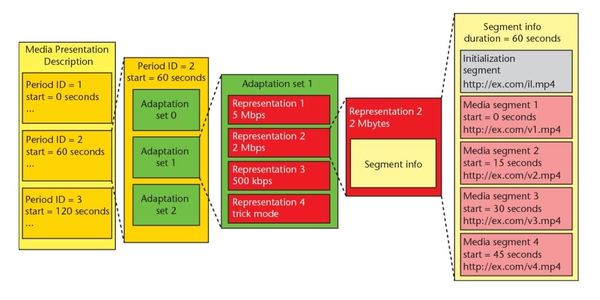In the rapidly expanding world of digital streaming, the race to deliver high-quality content to an exceedingly demanding audience has propelled the adoption of advanced streaming technologies. Among these, MPEG-DASH stands as a beacon for those seeking to ensure seamless delivery of video content across various internet conditions. Coupled with the Bento4 packaging tool, content creators and distributors have at their disposal a powerful duo for optimizing their OTT services.
Understanding MPEG-DASH and Its Importance
MPEG-DASH (Dynamic Adaptive Streaming over HTTP) represents a significant milestone in the evolution of streaming technologies. It is an international standard that enables high-quality streaming of media content over the internet, delivered from conventional HTTP web servers. The technology works by breaking down the content into a sequence of small HTTP-based file segments, each containing a short interval of playback time. These segments are served in different qualities, thus allowing the player to switch between them based on the current network conditions and the viewer's device capabilities.
This adaptability is the cornerstone of MPEG-DASH, ensuring that viewers enjoy the best possible quality without suffering from buffering or interruptions—a critical factor in maintaining audience engagement in the highly competitive OTT landscape.
The Role of Bento4 in Content Packaging
Enter Bento4, a versatile and highly efficient multimedia framework designed to address the complexities involved in content packaging and delivery for MPEG-DASH streaming. Bento4 facilitates the process of breaking down media files into the segmented format required for DASH streaming, simplifying the otherwise cumbersome task of preparing content for different devices and bandwidths. Moreover, it comes with the added advantage of supporting a wide array of codecs and container formats, making it a one-stop solution for content providers.
Why Choose Bento4?
Several factors make Bento4 the go-to tool for MPEG-DASH content packaging:
- Versatility: It is capable of handling a vast range of audio and video formats, ensuring broad compatibility.
- Efficiency: Bento4 is designed for high performance, enabling quick and efficient packaging of content.
- Ease of Use: Despite its powerful features, Bento4 is relatively easy to use, with a straightforward command-line interface and comprehensive documentation.
- Open-Source: Bento4 is available under an open-source license, giving developers the freedom to modify and integrate it into their systems as needed.
Step-by-Step Guide: Packaging Content with Bento4
To illustrate how Bento4 operates in packaging content for MPEG-DASH streaming, let’s go through a simple tutorial. Before beginning, ensure you have Bento4 installed on your system.
1. Organize Your Media Files
First, gather the video files you wish to package. For optimal streaming, it’s recommended to have your content encoded in various bitrates to accommodate different network speeds.
2. Segmentation and Packaging
Use the mp4fragment utility to fragment your media files. This step is essential for preparing the files for DASH streaming.
Here's a basic example of fragmenting a video file:
mp4fragment input.mp4 fragmented_output.mp4Next, use the mp4dash command to create a DASH-compatible package from the fragmented files. This command also generates the necessary manifest files (.mpd) for streaming:
mp4dash --output-dir=/path/to/output fragmented_output.mp4This command processes the fragmented file and outputs a DASH-compatible package in the designated output directory. The manifest file created during this process guides the player in adapting the stream based on available network conditions.
3. Verify Your Package
After packaging, it's crucial to verify the integrity and playability of your content. You can do this by using media players that support MPEG-DASH streaming or through online validation tools.
By following these steps, content providers can efficiently package their videos for MPEG-DASH streaming using Bento4, ensuring their audience enjoys high-quality, buffer-free viewing experiences across different devices and network conditions.
Conclusion
The harmony between Bento4 and MPEG-DASH stands as a testament to the advancements in streaming technology, offering an efficient path for delivering quality video content in the OTT domain. By understanding and leveraging these tools, content providers can meet and surpass the expectations of their viewers, securing their place in the competitive streaming market. Whether you're a seasoned content provider or new to OTT services, mastering the art of content packaging with Bento4 and MPEG-DASH will undoubtedly elevate your streaming capabilities.
